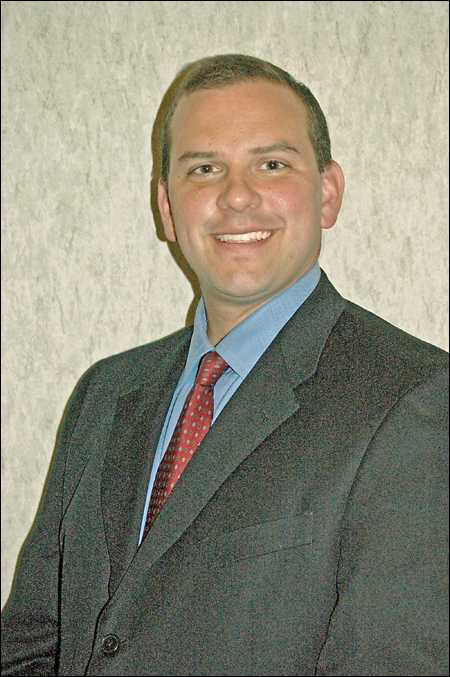
As published in the April 1, 2010 Toledo Business Journal

Wade Kapszukiewicz
Lucas County Treasurer
Land Bank to aid development
Toledo Business Journal recently interviewed Wade Kapszukiewicz, Lucas County treasurer. He shared the following thoughts.
Toledo Business Journal: Legislation is currently being considered in Ohio to establish land bank programs. Can you provide an overview of how a land bank would function?
Wade Kapszukiewicz: Under this proposal, tax foreclosed properties would be transferred to the county’s new land bank – called a Land Reutilization Corporation (LRC) – instead of being sold at a Sheriff’s sale, as is currently the case. Mortgage foreclosed properties, by far the biggest culprit in the current foreclosure crisis, could also be transferred to the LRC by banks or other financial institutions looking to walk away from distressed properties. In fact, Cuyahoga County has seen a large number of mortgage foreclosed properties transferred to its LRC.
Properties transferred to the LRC would receive a free and clear title, the lack of which is often a disincentive for private interests to invest in economically disadvantaged urban areas.
The most important part of the proposal is the mechanism for the LRC to have a consistent and self-sustained funding stream. Under the plan, money generated from land sales and the collection of delinquent taxes would fund the LRC, which could use the revenue to pay for rehabilitation or demolition of abandoned properties.
TBJ: Can you discuss funding for the land bank program?
WK: It’s the existence of a consistent and reliable funding stream that distinguishes active land banks, which this proposal would create, from the passive land banks that have been around since the 1970s. Active land banks can receive funds from a number of sources, such as grants or the sale of properties obtained by the LRC. But, by far, the primary source of funding would come from the interest on certain delinquent property taxes, which are collected by my office. The proposal would change State law to allow these delinquent payments to fund the operations of the LRC, and early estimates are that this funding stream could produce up to $1 million.
TBJ: Which communities in northwest Ohio would be eligible to set up a land bank?
WK: Currently, Cuyahoga County is the only county in Ohio that can create an active land bank. The bill that passed the Ohio House of Representatives (HB 313) extends land banking authority to counties with populations of 100,000 or more – 29 counties in all. In northwest Ohio, that includes Lucas, Wood, Erie, and Allen Counties.
TBJ: Are these land banks operating in other areas of Ohio or Michigan? Can you discuss their impact?
WK: While many communities in Ohio have passive land banks – that is, land banks that lack the funding streams necessary to turn blighted properties back into productive use – only Cuyahoga County currently has the ability to implement an active land bank. Passage of HB 313 by the Ohio Senate would extend to roughly one-third of all Ohio counties the authority to create active land banks.
Michigan has been a pioneer in the creation of active land banks, and communities like Ingham County (Lansing), Saginaw County (Saginaw), Kent County (Grand Rapids), and Genesee County (Flint) have taken advantage of the opportunity to use this new tool.
The experience in Flint is especially important, since in many ways, due to a steady loss of jobs and population since the early 1960s, Flint’s name has become synonymous with urban decay.
After the formation of the Genesee County Land Bank in 2002, Flint began to see tangible benefits right away. The aggregate market value of its properties increased by an extraordinary $112 million due to the land bank’s activities between 2002 and 2005, with over 26,000 individual properties seeing an increase in value. This re-found wealth has bolstered home equity, neighborhood stability, and Flint’s local economy as well as Genesee County’s property tax base. Flint demonstrates that land banking can assist the private and public sectors in the creation of new wealth in a once-devastated community.
The positive experience in Flint is the biggest reason why active land banks have been implemented recently in places like Atlanta, Indianapolis, and Louisville, among other cities across the nation.
TBJ: Can you discuss potential benefits that will result from a land bank program?
WK: This proposal would allow our community to take control of its own destiny, instead of being held hostage by out-of-town land speculators or Wall Street banks. With an inventory of vacant and abandoned houses – and a consistent funding stream to demolish or rehab and market them – the LRC can play an important role in stabilizing our neighborhoods, increasing our property values, and promoting smarter land use and economic growth.
TBJ: Where does the legislation for the program stand?
WK: The proposal passed the Ohio House last December, with large numbers of both Democrats and Republicans voting for it. It is now being debated in the Ohio Senate, where several hearings have already been held and a final vote could occur by late March or early April. Should the measure pass in the Ohio Senate, and then be signed by Governor Strickland, I believe a LRC could be up and running in Lucas County by the end of the year.
TBJ: Are there any other issues you would like to address?
WK: At a time when Democrats and Republicans can’t seem to agree on much, the land bank proposal appears to be one area where there is a bipartisan consensus. When HB 313 passed the Ohio House last December, it did so by an overwhelming 83-14 margin. The bill’s primary sponsor in the Ohio House is a Democrat (Representative Peter Ujvagi), while the primary sponsor in the Ohio Senate is a Republican (Senator Mark Wagoner). Their efforts to bring active land banking to Lucas County underscore both the broad bipartisan support for the proposal and the urgent need to utilize it in our region.